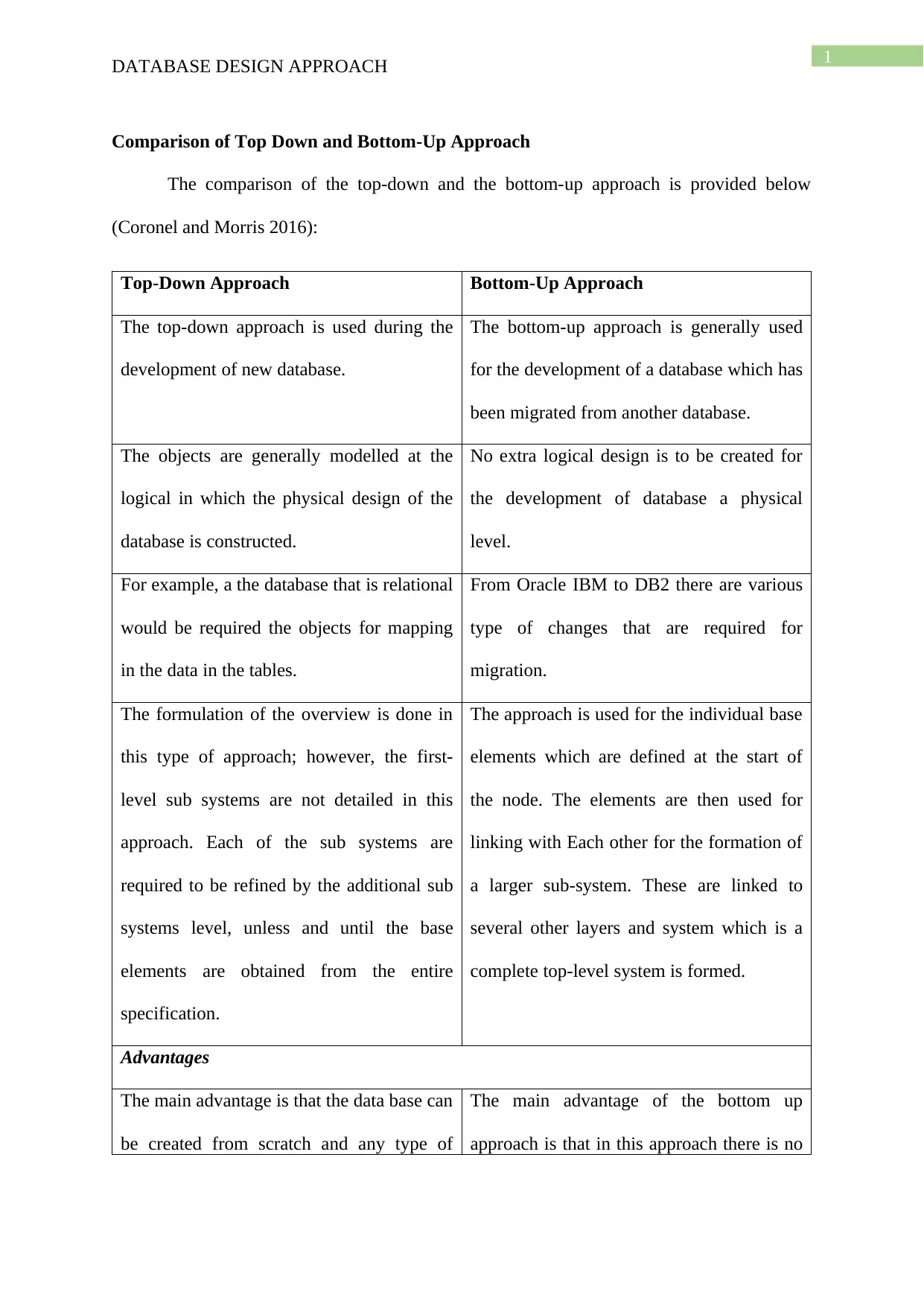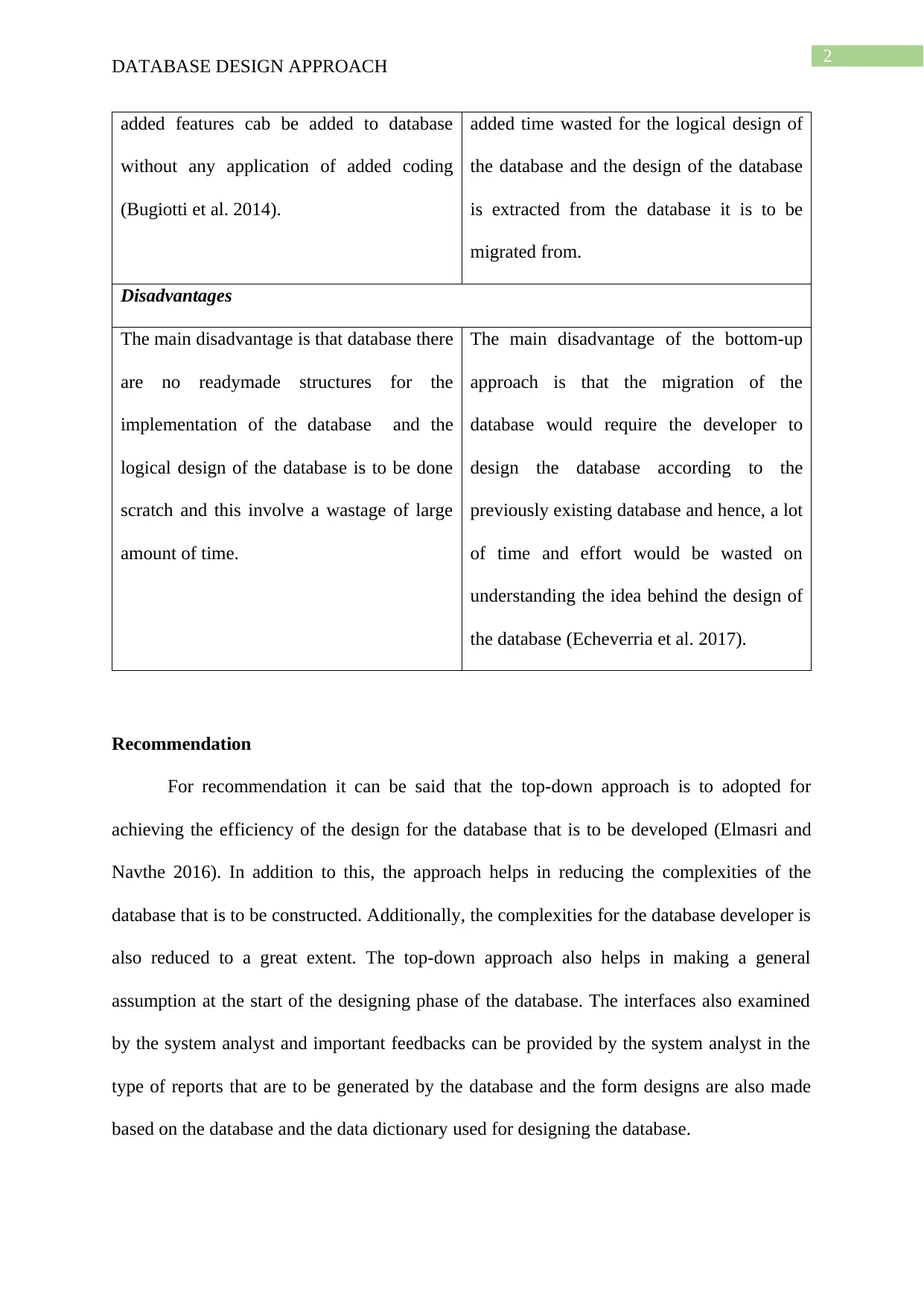Analysis of Top-Down and Bottom-Up Database Design Approaches
VerifiedAdded on 2021/04/24
|4
|732
|300
Essay
AI Summary
This essay provides a detailed comparison of the top-down and bottom-up approaches to database design, outlining the advantages and disadvantages of each method. The top-down approach is best suited for new database development, allowing for the incorporation of added features without extensive coding, although it requires significant time for logical design. Conversely, the bottom-up approach is more appropriate for database migration, leveraging existing structures but potentially inheriting design limitations. The essay recommends the top-down approach for achieving design efficiency and reducing complexity in new database projects, while also considering system analyst feedback on interface design and report generation. The document is available on Desklib, a platform offering study tools for students.
1 out of 4











![[object Object]](/_next/static/media/star-bottom.7253800d.svg)